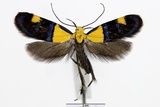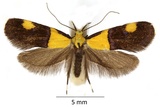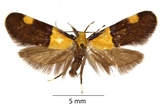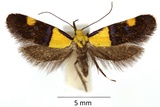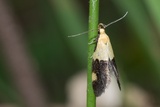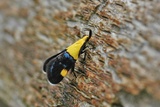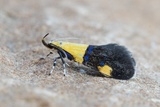Oecophora bractella (Linnaeus, 1758) Species
Last modified: Dec. 8, 2025, 6:08 p.m.
A fairly common and scattered species throughout Belgium.
Details
- Classification
- Family: Oecophoridae > Subfamily: Oecophorinae > Genus: Oecophora > Species: Oecophora bractella
- Vernacular names
- Molmboorder (NL)
- First mention in Belgium
- De Fré Ch. 1858. Catalogue des Microlépidoptères de la Belgique. — Annales de la Société entomologique belge 2: 45–162. On page 122 (as Harpella Bracteella [sic] L.). view page
- Status
-
Native
Distribution
Caterpillar
Dark grey, head capsule pale brown, prothoracic and last abdominal segment darker brown.
Cocoon/pupa
Pupation in a silken cocoon in which frass is used.
Bionomics
The caterpillar constructs a loose, silken gallery under dead bark of various trees, preferably deciduous wood.
Pupation takes place between April and June in a silken cocoon covered with frass in the larval feeding place.
The adults are active in early morning sunshine, they hide during the rest of the day but come occasionally to light.
Flight periods
One long generation a year from May till the end of July.
Observed on
The caterpillar feeds on decaying wood, lichens and fungi under the dead bark of various trees, like Acer, Alnus, Betula, Carpinus, Corylus, Fraxinus, Larix, Picea, Pinus, Prunus, Quercus, Salix, Tsuga, etc. especially when the tree is infected with Armilleriella mellia. It has a preference for Carpinus betulus and Fagus sylvatica.
Habitat
Open places with a lot of bushes, clearings and roads in forests, parks. The species seems to have a preference for deciduous forests in xerothermic habitats.
